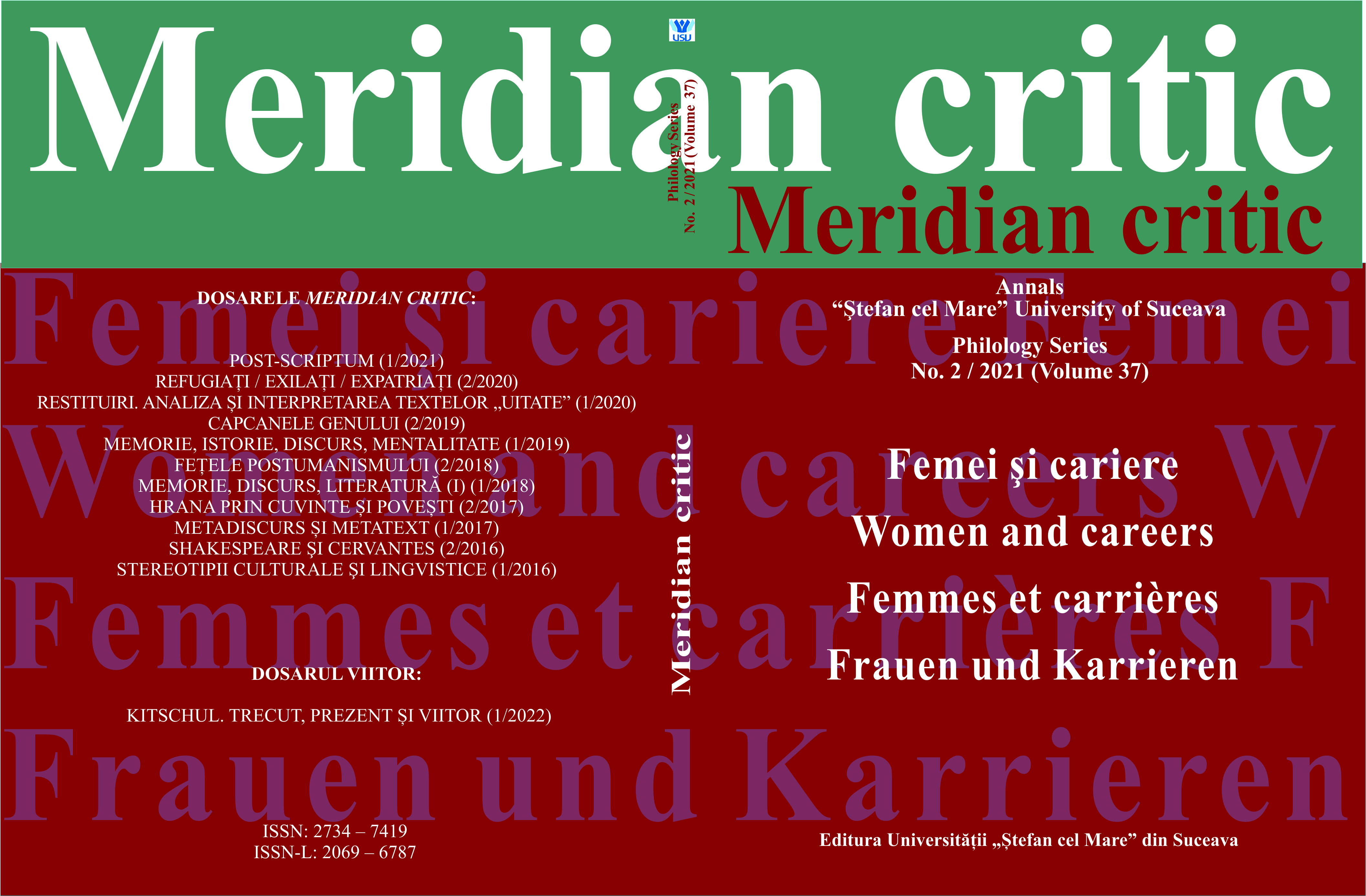Eugen Ionescu. Păpuşa de tărâţă şi arlechinul – arhetipuri într-un tipar inovator
Eugen Ionescu. The Bran Doll and the Harlequin – Archetypes in an Innovative Pattern
Author(s): Oana Corneanu (Zugravu)Subject(s): Language and Literature Studies, Studies of Literature, Romanian Literature
Published by: UNIVERSITATEA »ȘTEFAN CEL MARE« SUCEAVA
Keywords: tragic character; harlequin; preposterous; despair; revolt;
Summary/Abstract: Eugen Ionescu’s Romanian writings, starting with the poems in the volume ”Elegies for small beings”, continuing with ”Nu”, the pages of his diary, and with his first play of the absurd – ”English without a Teacher” – reveal a subtle writer who, from the very beginning, expresses that astonishment in front of the spectacle of the grotesque but also the mundane’s loss of the miraculous, by employing a style that takes him out of anonymity and can represent a value in itself, before the writer’s consecration in world literature. The creative self, regardless of the textual pattern he may choose, illustrates two archetypes in an innovative technique, namely the bran doll and the harlequin. Through these two symbolic hypostases, the author conveys his inner tearing, which is triggered by man’s condition of a puppet facing destiny. Complementary to them is that of a jester or a mountebank, the only option of survival that the artist has in a universe where one does not always have freedom of choice. These projections are of tragic origin and anticipate his dramatic art in which he will express not only one’s helplessness in the face of the misfortune of being born and of experiencing the oppression of history and society, but, above all, that aforementioned astonishment.
Journal: Meridian critic
- Issue Year: XXXVII/2021
- Issue No: 2
- Page Range: 297-302
- Page Count: 6
- Language: Romanian

